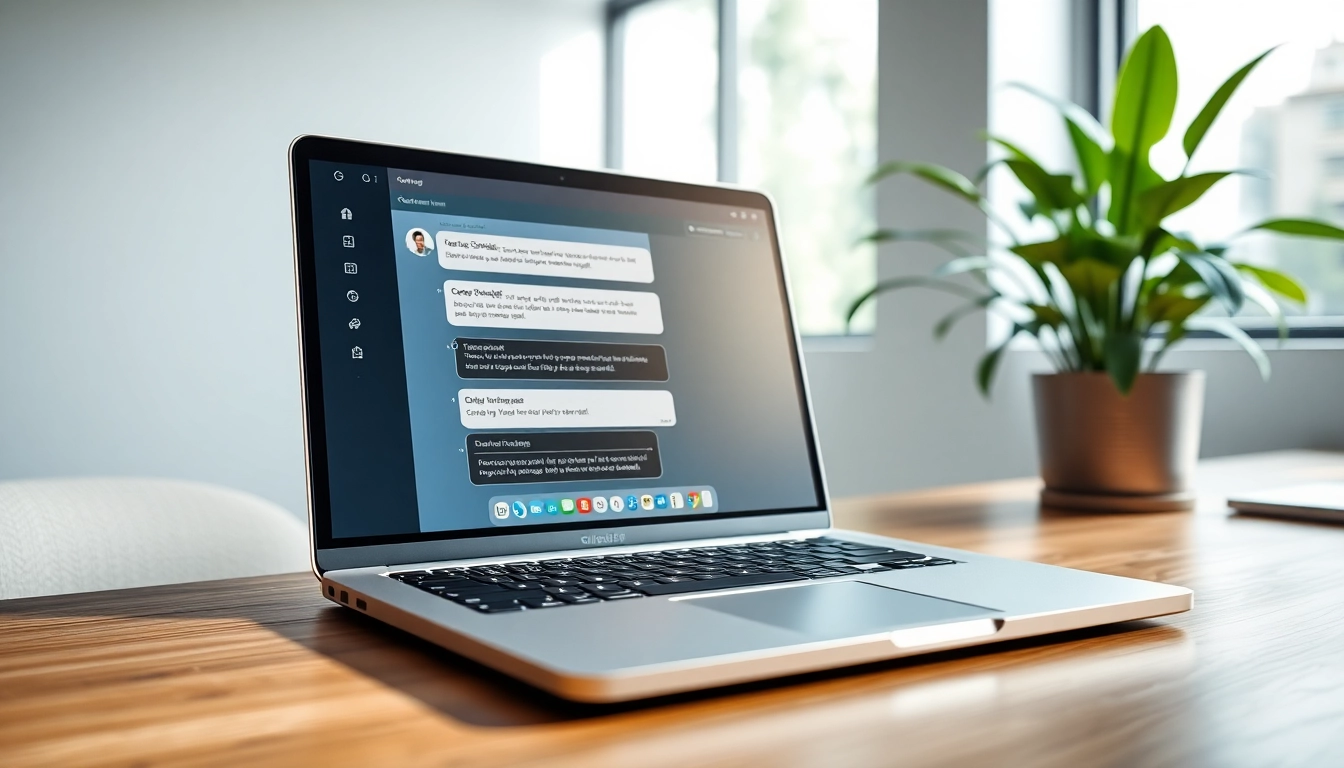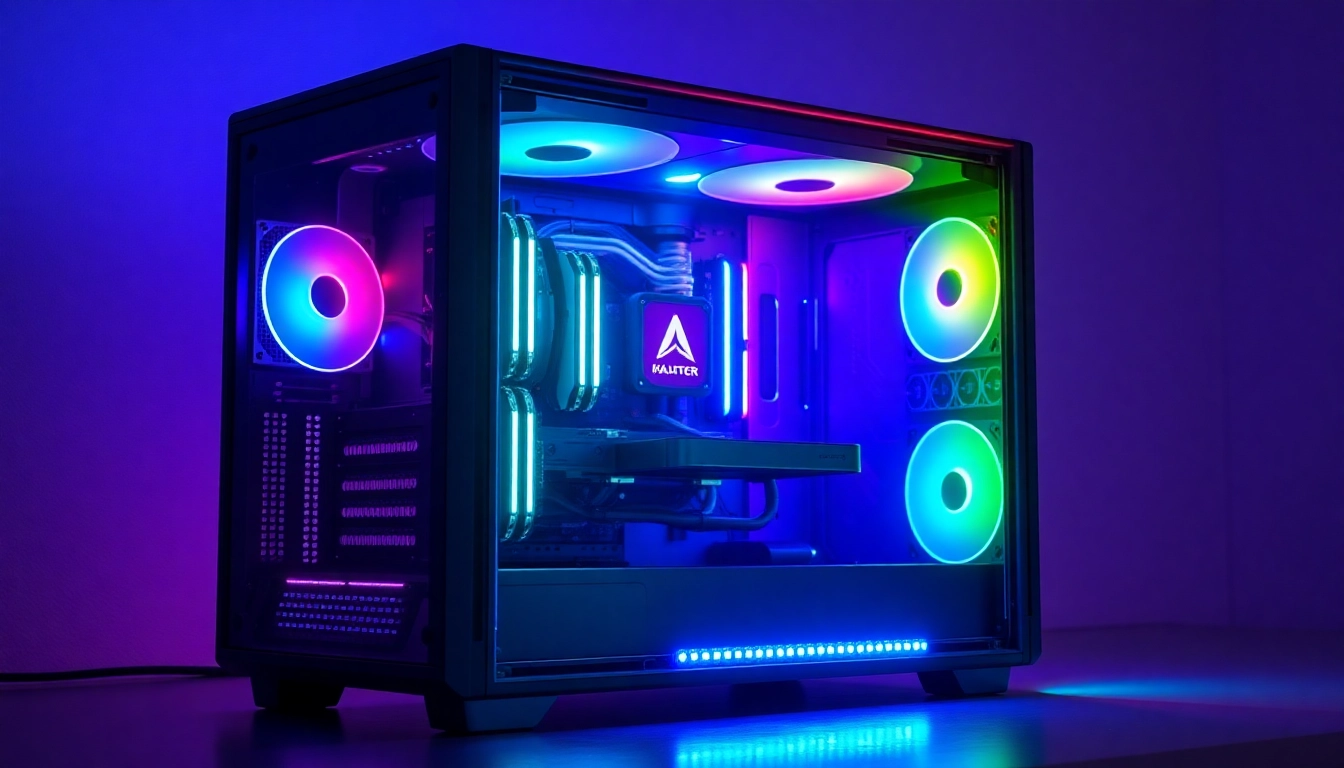Understanding ChatGPT Chatbots
What is a ChatGPT Chatbot?
ChatGPT chatbots, powered by OpenAI’s Generative Pre-trained Transformer (GPT) technology, are advanced conversational agents designed to understand and generate human-like text based on input from users. Unlike traditional chatbots, which rely on simple keyword recognition or pre-programmed responses, ChatGPT chatbots leverage deep learning techniques to comprehend context and engage in dynamic conversations. This allows them to respond more intelligently to a wide array of inquiries, making chats feel more personal and engaging.
In essence, a chatgpt chatbot transforms the way businesses interact with customers, elevating user experience and providing instant support in various applications from customer service to personal assistance.
Key Features and Benefits
ChatGPT chatbots come equipped with a myriad of features that enhance their effectiveness and usability:
- Natural Language Processing (NLP): They can comprehend and process human language nuances, including slang, idioms, and various dialects.
- High-Quality Responses: Generated responses are coherent and contextually appropriate, making interactions smoother.
- 24/7 Availability: Unlike human agents, chatbots can operate round the clock, ensuring users receive immediate assistance.
- Scalability: They can handle multiple conversations simultaneously, significantly reducing wait times in high-demand situations.
- Cost Efficiency: Automating responses decreases the need for extensive customer service teams, allowing businesses to allocate resources more efficiently.
- Data Collection: Chatbots can gather insights from conversations, aiding businesses in refining their products and services.
Common Use Cases Across Industries
ChatGPT chatbots can be integrated into numerous sectors, each benefiting from automation and improved interaction capabilities:
- E-commerce: These chatbots assist customers in finding products, answering frequently asked questions, and processing returns seamlessly.
- Healthcare: They can help book appointments, provide preliminary medical advice, and manage vaccinations.
- Financial Services: Chatbots offer insights into account balances, transaction history, and even financial advice on investment options.
- Education: They play a pivotal role in distance learning by answering student queries and providing study resources.
- Travel and Hospitality: From booking flights to providing real-time travel updates, chatbots enhance travel experiences significantly.
Implementing ChatGPT Chatbots for Your Business
Steps to Integrate into Your Website
Integrating a ChatGPT chatbot into your website is a straightforward process that involves several key steps:
- Identify Goals: Determine the specific functions you want the chatbot to perform, such as customer support, sales assistance, or feedback collection.
- Select a Chatbot Provider: Choose a reliable platform that offers ChatGPT integration—options might include tools like Dialogflow, Rasa, or Botpress.
- Design the Conversational Flow: Map out potential user interactions and design the chatbot’s response paths to cover common queries.
- Develop and Train the Model: Use historical chat data to train the model, ensuring it can generate appropriate responses.
- Test the Chatbot: Conduct rigorous testing to ensure it handles inquiries correctly and identifies flaws in its conversational capabilities.
- Launch and Monitor: Deploy the chatbot on your website and monitor its interactions, making adjustments as necessary for optimization.
Best Platforms for Deployment
Several platforms excel in providing tools for deploying ChatGPT chatbots:
- OpenAI API: Direct access to the ChatGPT model for developers who want customizable solutions.
- Microsoft Azure: Offers cloud-based solutions powered by AI with integration into various business applications.
- ManyChat: A user-friendly platform aimed at marketing with chatbot functionality tailored for social media platforms.
- Intercom: Focused on customer engagement, Intercom uses AI to improve conversation quality and user satisfaction.
Common Challenges and Solutions
While integrating ChatGPT chatbots offers numerous benefits, businesses may encounter challenges:
- Data Privacy: Ensure compliance with data protection laws (such as GDPR) by implementing proper data handling protocols.
- Understanding User Intent: Sometimes, the chatbot may misinterpret user queries. Ongoing training and user feedback can help improve accuracy.
- Technical Issues: Regular maintenance and updates are crucial to fix bugs or issues that could hinder user experience.
- Over-reliance on Technology: Ensure that human agents are available to step in, especially for complex queries that the chatbot cannot resolve.
Measuring the Performance of Your ChatGPT Chatbot
Key Metrics to Track
To evaluate the effectiveness of your ChatGPT chatbot, consider tracking the following metrics:
- User Engagement: Measure the frequency of user interactions and how long customers are engaging with the chatbot.
- Resolution Rate: Track how many inquiries were resolved without needing human intervention.
- Customer Satisfaction Scores: Use post-interaction surveys to gather insights on user satisfaction and perceived value.
- Response Time: Monitor the average time taken by the chatbot to respond to user inquiries—quicker responses usually equate to better user experiences.
Improving User Interaction Rates
To boost engagement and interaction rates with your ChatGPT chatbot, consider the following strategies:
- Personalization: Utilize user data to tailor interactions and provide customized responses based on prior interactions or preferences.
- Interactive Elements: Incorporate multimedia (such as images, videos, and quick reply buttons) to make conversations more engaging.
- Proactive Engagement: Program the chatbot to initiate conversations based on user behavior, such as after prolonged inactivity on a page.
- Continuous Learning: Regularly analyze interaction data to tweak scripts and improve the conversational flow.
Feedback Loops for Continuous Enhancement
Creating feedback loops is essential for the continuous improvement of your ChatGPT chatbot:
- User Feedback: Encourage users to provide feedback at the end of their chat sessions to identify areas for enhancement.
- A/B Testing: Experiment with different conversational flows and responses to find the most effective approach.
- Collaborative Team Reviews: Involve multiple team members in reviewing interactions to gain diverse insights into user experiences.
Optimizing ChatGPT Chatbots for User Experience
Personalization Techniques
Personalization is critical when designing user interactions with ChatGPT chatbots. Here are some techniques that enhance user experience:
- User Profiles: Create user profiles that retain preferences and past interactions, allowing the chatbot to provide personalized recommended solutions or responses.
- Localized Content: Tailor conversations based on the geographical location of users, making the interactions feel more relevant and engaging.
- Customizable Features: Allow users to select their communication style (formal or informal) and preferred response formats, enhancing comfort levels.
Designing Conversational Flows
An intuitive conversational design aids the usability of the chatbot:
- Natural Dialogue Structures: Create dialogues that don’t feel robotic by incorporating transitional phrases and contextual references.
- Branching Paths: Design conversation branches based on user responses to avoid frustration with irrelevant follow-up questions.
- Fallback Strategies: Implement fallback responses that can guide users back on track if they go off-topic or if the bot fails to comprehend their input.
Testing and Iteration Strategies
Testing and iteration are vital in optimizing chatbots:
- Beta Testing: Before a full launch, use a selected group of users to test the chatbot under varied conditions, allowing for valuable feedback.
- Simulated Conversations: Regular testing workloads with simulated conversations can help stress test the bot’s limits and evaluate its capability.
- Regular Updates: Consistently iterate on the chatbot’s responses and capabilities based on user interactions and feedback.
The Future of ChatGPT Chatbots in Customer Interaction
Trends Shaping the Technology Landscape
The landscape of chatbot technology is evolving rapidly with several emerging trends:
- Increased Use of Voice: Voice-activated chatbots are becoming more common, allowing users to communicate effortlessly through speech.
- Hyper-Personalization: There’s a growing emphasis on hyper-personalizing user experiences based on real-time data and preferences.
- Seamless Multi-Channel Integration: Users expect a consistent experience across platforms, whether on websites, apps, or social media.
How AI is Evolving Chatbots
Artificial intelligence is continuously enhancing ChatGPT capabilities:
- Improved Contextual Understanding: Advances in AI allow bots to hold context over longer interactions, creating more meaningful conversations.
- Emotion Recognition: Future chatbots could analyze user sentiment in conversations, adapting responses to improve user satisfaction.
- Integration with IoT: Chatbots may achieve deeper integration with IoT devices, providing responses based on real-time sensory data.
Preparing for the Next Generation of Chat Interfaces
Businesses should prepare for the next frontier in chatbot capabilities:
- Ongoing Investment in AI: Companies must continually invest in AI improvements and data processing capabilities to stay ahead.
- Emphasis on User Privacy: With increased use of personalization, prioritizing user privacy and data protection will be crucial for trust.
- Focus on User Education: Ensuring that users understand how to engage with chatbots effectively will enhance overall experience.



